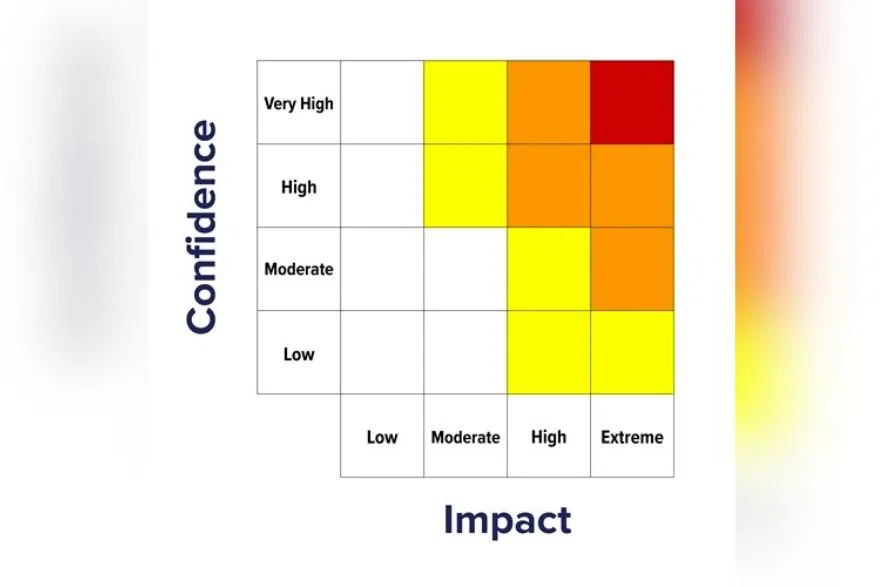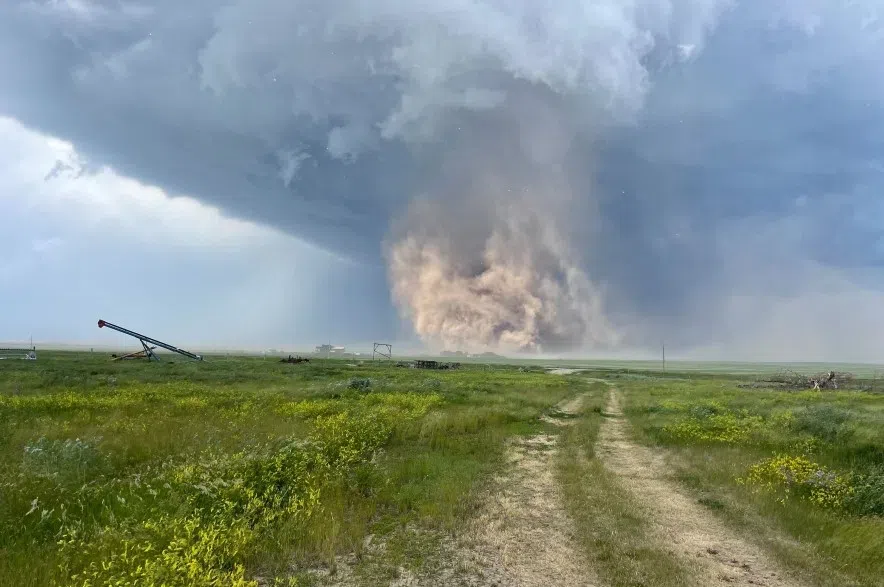Weather alerts from Environment Canada are now colour-coded, with each colour indicating the level of risk the weather poses.
According to Environment Canada, “each type of weather alert – Warnings, Advisories and Watches – now has a colour when it is issued. The colours move from yellow to orange to red as the potential risk increases.”
Read more:
- Thick fog lingers in parts of Sask., prompting fog advisories from Environment Canada
- Heavy snow heading for southwest Saskatchewan: Environment Canada
- Carney, Smith sign pipeline deal, open door to changing B.C. tanker ban
When choosing the colour to issue along with the weather alert, Environment Canada said two types of information are considered: confidence that the weather will happen and its potential impact.

Environment Canada has introduced a colour-coded system for its warnings, watches and advisory alerts. (Environment Canada)
In a yellow warning for wind, for example, people may see some short-term utility outages, larger tree branches broken and a risk of injury from flying or falling debris.
An orange warning for wind means there might be widespread utility outages, some roof damage, small to medium trees snapped and an increased risk of injury from debris.
A red warning for wind may mean long periods of widespread utility outages, structural damage to homes and buildings, significant damage to trees, including orchards and parks, and a high likelihood of injury due to flying or falling debris.
For each alert, Environment Canada said there can be different combinations of weather impact and forecast confidence.
Alerts aren’t issued when the potential impact is expected to be low or moderate and confidence is low or moderate.
Yellow alerts are issued when the potential impact is moderate and confidence is high or very high, the potential impact is high and confidence is low or moderate, or the possible impact is extreme and confidence is low.
Orange alerts are issued when the potential impact is high and confidence is high or very high, or when the possible impact is extreme and confidence is moderate or high.
Red alerts are only issued when the possible impact is extreme and confidence is very high.
Weather impact levels – moderate, high, and extreme – describe how the weather will affect travel delays, utilities disruption, damage to property, danger to people’s health, and time for society to recover.
For low-impact weather, where daily activities are not affected, no alert is issued.
Environment Canada decides its level of confidence that a weather event will happen using a variety of information sources, including current observations, weather prediction models and forecaster expertise.
“Ultimately, it is our forecasters who decide on when there is low, moderate, high or very high confidence that a weather event will happen,” the weather service said. “We use this confidence in our Alert Colour Matrix to help choose a weather alert’s colour.”











